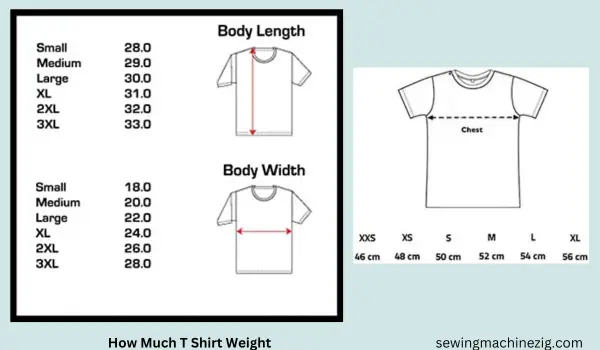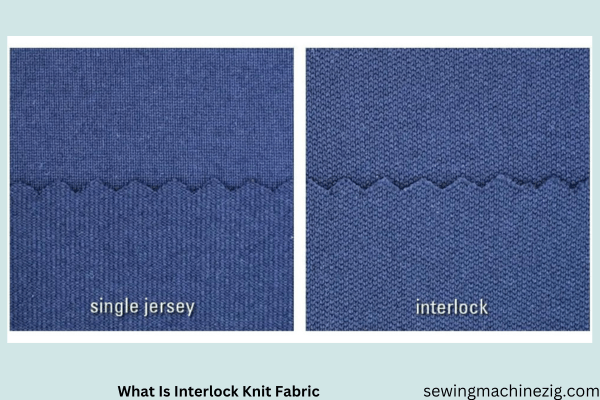
What is interlock knit fabric? If you’ve ever marveled at the softness, stretch, and resilience of your favorite T-shirt or wondered about the construction behind high-performance athletic wear, the answer lies in interlock knit fabric. Renowned for its exceptional characteristics, this textile marvel has become a staple in the fashion industry and beyond.
Now, you might be wondering, “what is interlock knit fabric so special?” The answer lies in its incredible stretchability and recovery. With its dual-knit structure, interlock fabric offers remarkable elasticity; ensuring garments made from this fabric provide a comfortable and flexible fit. Whether you’re engaging in physical activities or simply seeking everyday comfort, interlock knit fabric molds to your body’s contours while retaining its shape, time after time.
In this comprehensive overview of what is interlock knit fabric, we will delve into its unique construction, explore its notable characteristics, examine its diverse applications, and highlight the advantages it offers to both manufacturers and consumers. Through a deeper understanding of this remarkable textile, we hope to foster an appreciation for its versatility and inspire its continued use across various industries.
Materials:
Interlock knit fabric is composed of high-quality fibers that contribute to its unique properties and characteristics. These materials are carefully selected to ensure optimal performance and comfort. The following are commonly used materials in the production of interlock knit fabric so that you will understand what is interlock knit fabric:
1. Cotton:

Cotton is a popular choice for interlock knit fabric due to its softness, breathability, and natural moisture-absorption properties. It offers comfort and a luxurious feel against the skin, making it suitable for a wide range of clothing items.
2. Polyester:
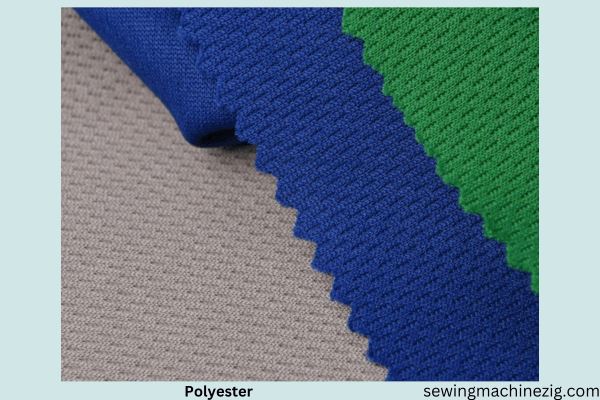
Polyester fibers are often blended with cotton or used alone in interlock knit fabric. Polyester brings durability, wrinkle resistance, and excellent shape retention to the fabric. It enhances the fabric’s longevity, making it suitable for sportswear, activewear, and other garments that require enhanced performance.
3. Rayon:
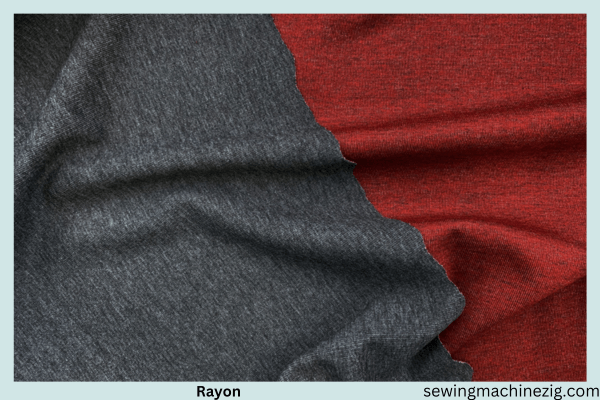
Rayon, a semi-synthetic fiber made from regenerated cellulose, is valued for its silky texture, durability, and breathability. It adds a luxurious touch to interlock knit fabric and contributes to its comfort and versatility.
4. Spandex/Lycra:
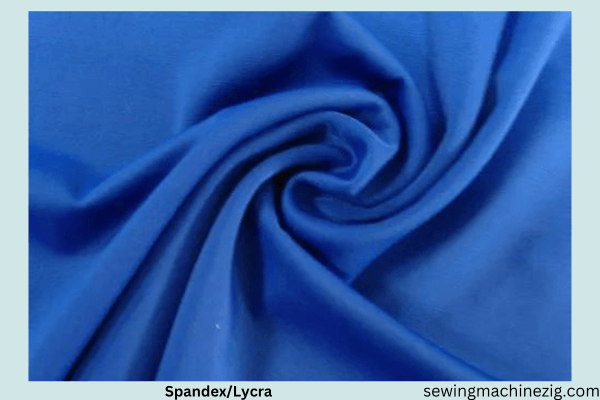
Spandex, also known as Lycra or elastane, is an essential component of interlock knit fabric. Its exceptional stretch and recovery properties allow the fabric to retain its shape while offering flexibility and freedom of movement. The addition of spandex enhances the fabric’s elasticity and ensures a snug fit.
5. Blends:
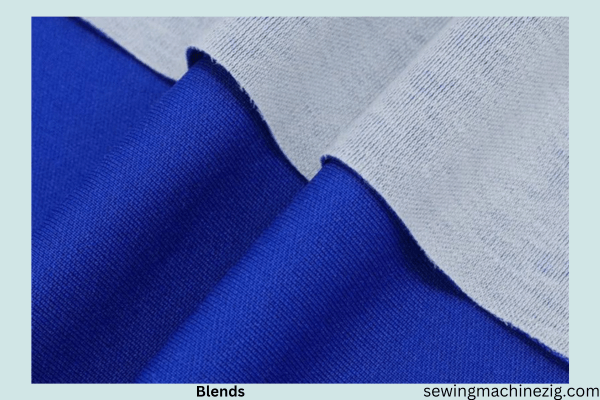
Interlock knit fabric can also be composed of various fiber blends to combine the desirable characteristics of different materials. Blends like cotton polyester, cotton rayon, or cotton spandex are common, offering a balance of comfort, durability, and performance.
It’s important to note that the specific combination and ratio of these materials may vary depending on the desired end-use and the preferences of manufacturers and consumers.
The careful selection and blending of these materials contribute to the exceptional qualities of interlock knit fabric, making it a sought-after textile for a wide range of applications, from casual wear to high-performance sportswear. Hope now you understand what is interlock knit fabric.
What Is Interlock Knit Fabric Made Of
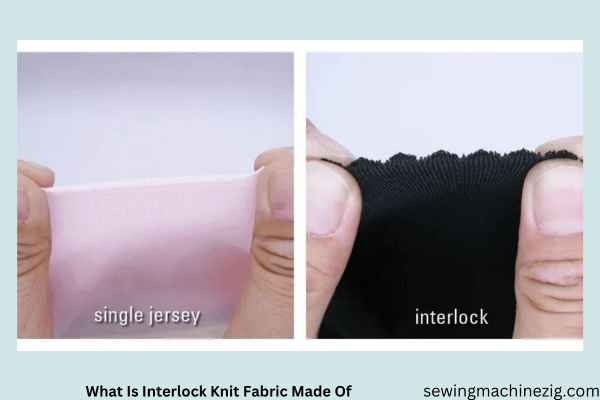
Interlock knit fabric is a versatile textile that has captured the attention of the fashion industry and consumers alike. Made from a carefully selected blend of high-quality materials, such as cotton, polyester, rayon, and spandex, this fabric offers a unique combination of comfort, stretch, and durability. Knowing what is interlock knit fabric made of; is a very interesting topic. Its softness, breathability, and excellent shape retention make it a popular choice for a wide range of clothing items.
Interlock knit fabric is typically made of a combination of high-quality fibers carefully chosen for their specific properties. The exact composition may vary depending on the desired characteristics of the fabric.
Natural fibers commonly used in interlock knit fabric include cotton, wool, and silk. Cotton provides breathability and softness, making the fabric comfortable to wear. Wool offers insulation and moisture-wicking properties, ensuring warmth and comfort. Silk contributes a luxurious feel and a lustrous appearance, adding elegance to the fabric.
Synthetic fibers like polyester, nylon, and spandex also play a crucial role in interlock knit fabric. Polyester blends enhance the fabric’s strength, wrinkle resistance, and color retention. Nylon adds durability and shape retention with its high strength and abrasion resistance. Spandex imparts elasticity, allowing the fabric to stretch and recover.
What Is Interlock Fabric Used For
Interlock fabric, with its versatile properties and durability, finds application in a wide range of industries and garments. This fabric’s unique construction and desirable characteristics make it a favored choice for various purposes. From comfortable everyday wear to high-performance sportswear, interlock fabric offers exceptional versatility and functionality.
Its ability to provide excellent stretch, breathability, and shape retention has made it popular in activewear, loungewear, undergarments, baby clothing, and accessories. Additionally, the interlock fabric’s smooth surface allows for easy customization and printing, enabling designers to unleash their creativity. Let’s explore the diverse applications and advantages of what is interlock knit fabric used for across different domains.
Interlock fabric is widely used across various industries and has found its place in numerous garments and applications. Its versatile nature and desirable qualities make it a preferred choice for the following purposes:
1. Apparel:
Interlock fabric is commonly used in the production of comfortable and durable clothing items. It is ideal for creating t-shirts, dresses, skirts, tops, and loungewear due to its softness, breathability, and excellent stretch. The fabric’s ability to retain its shape even after repeated use and washing makes it a reliable choice for everyday wear.
2. Activewear And Sportswear:
Interlock fabric’s exceptional stretch and recovery properties make it highly suitable for activewear and sportswear. It provides optimal freedom of movement, ensuring comfort during physical activities. The fabric’s breathability and moisture-wicking properties also make it an ideal choice for athletic apparel, keeping the wearer cool and dry.
3. Undergarments And Lingerie:
The softness and smoothness of interlock fabric make it a popular choice for undergarments and lingerie. Its comfortable feel against the skin and excellent stretch offer a snug fit without compromising on comfort or support.
4. Baby Clothing:
Interlock fabric’s gentle touch and breathability make it an excellent option for baby clothing. It provides a soft and comfortable layer against a baby’s delicate skin, allowing for ease of movement and ensuring comfort throughout the day.
5. Accessories:
Interlock fabric is also used for various accessories such as headbands, scarves, hats, and gloves. Its stretchability and versatility enable designers to create functional and fashionable accessories.
6. Home Textiles:
Interlock fabric is utilized in home textiles like bedsheets, pillowcases, and blankets due to its softness and durability. The fabric’s breathability and ability to maintain its shape make it a popular choice for these applications.
Overall, interlock fabric’s versatility, comfort, stretch, and durability make it suitable for a wide range of garments and applications, meeting the needs of both style and functionality.
Benefits Of Interlock Knit
Interlock knit fabric offers a host of benefits that have contributed to its popularity in the textile industry. With its unique construction and desirable characteristics, interlock knit fabric provides numerous advantages to both manufacturers and consumers. From exceptional comfort and durability to excellent stretch and breathability, this fabric has become a favored choice for various applications.
In this article, we will explore what is interlock knit fabric benefits, highlighting its versatility, resilience, and ability to meet the demands of modern fashion and lifestyle requirements. By delving into the advantages it offers, we aim to showcase why to interlock knit fabric continues to be highly regarded in the realm of textiles.
Interlock knit fabric offers a range of benefits that contribute to its popularity and widespread usage. Here are some key advantages of what is interlock knit fabric benefits:
1. Comfort:
Interlock knit fabric is known for its exceptional softness and comfort. Its smooth and gentle texture provides a comfortable feel against the skin, making it a preferred choice for everyday wear and garments worn for extended periods.
2. Durability:
The interlocking loop structure of interlock knit fabric enhances its durability and strength. It can withstand regular wear and washing without losing its shape or integrity, ensuring long-lasting garments that maintain their quality over time.
3. Stretch And Recovery:
Interlock knit fabric exhibits excellent stretch and recovery properties. It offers optimal flexibility and freedom of movement, allowing garments to adapt to body contours without losing their shape. This makes it ideal for sportswear, activewear, and other clothing items that require enhanced mobility.
4. Breathability:
The construction of interlock knit fabric creates tiny air pockets within the fabric, promoting airflow and enhancing breathability. This helps in regulating body temperature and moisture management, making it comfortable to wear in various climates and during physical activities.
5. Versatility:
Interlock knit fabric is highly versatile and suitable for a wide range of applications. It can be used for casual wear, formal wear, athletic wear, undergarments, and more. Its adaptability allows designers to create diverse styles and designs to meet different fashion preferences.
6. Easy Care:
Interlock knit fabric is generally easy to care for. It is often machine washable and resistant to wrinkling, making it convenient for everyday wear and practical for those with busy lifestyles.
7. Customization:
The smooth and uniform surface of interlock knit fabric provides an excellent canvas for customization. It readily accepts printing, embroidery, and other embellishments, allowing for creative expression and unique designs.
By combining comfort, durability, stretch, breathability, and versatility, interlock knit fabric has become a go-to choice for designers, manufacturers, and consumers looking for high-quality garments that provide both style and functionality.
What Is The Difference Between Jersey Knit And Interlock Knit
When it comes to knit fabrics, two popular options often come to mind: jersey knit and interlock knit. While both share similarities in their knitted construction, there are distinct differences that set them apart. Understanding these differences can help in choosing the right fabric for specific applications. In this article, we will explore what is interlock knit fabric and the dissimilarities between jersey knit and interlock knit fabrics, including their structures, characteristics, and ideal uses. By delving into these variances, we aim to provide clarity and assist in making informed decisions when selecting the most suitable knit fabric for different projects.
Difference Between Jersey Knit And Interlock Knit:
Jersey Knit:
1. Construction:
Jersey knit fabric is constructed with a single-knit technique, featuring a single layer of interconnected loops on one side and visible rows of “V” stitches on the other side.
2. Stretch And Recovery:
Jersey knit fabric typically has more stretch in one direction (usually width-wise or crosswise) compared to the other direction. It may have good stretchability but slightly less recovery, meaning it may not bounce back to its original shape as well.
3. Thickness And Weight:
Jersey knit fabric is generally lightweight and has a drapey nature. It is often thinner compared to interlock knit fabric, offering a more lightweight and breathable option.
4. Appearance:
Jersey knit fabric has a characteristic textured appearance with the “V” stitch pattern on one side and a smooth surface on the other side. This gives it a more casual and relaxed look, suitable for comfortable and laid-back garments.
5. Versatility:
Jersey knit fabric is versatile and commonly used for a wide range of garments, including t-shirts, dresses, and lightweight tops. Its drapey nature lends well to projects that require fluidity and a more relaxed fit.
Interlock Knit:
1. Construction:
Interlock knit fabric is constructed with a double-knit technique, interlocking two sets of loops. This creates a double-faced fabric with a more stable and uniform appearance on both sides.
2. Stretch And Recovery:
Interlock knit fabric offers equal stretch and recovery in both the lengthwise and crosswise directions. It has excellent recovery, meaning it has the ability to bounce back and retain its shape well after stretching.
3. Thickness And Weight:
Interlock knit fabric is generally thicker and more substantial compared to jersey knit fabric due to its double-layered construction. It provides more body and stability to garments.
4. Appearance:
Interlock knit fabric has a more uniform and smooth surface on both sides, giving it a polished and neat appearance. It is suitable for projects that require a structured and refined look.
5. Versatility:
Interlock knit fabric is versatile and commonly used for garments that require more structure, such as fitted tops, dresses, activewear, and items that need shape retention. It’s stability and better recovery make it an ideal choice for garments with a more tailored fit.
Understanding what is interlock knit fabric and the differences between jersey knit and interlock knit fabrics helps in choosing the most suitable fabric based on factors such as stretch, appearance, weight, and intended use.
Conclusion:
Interlock knit fabric is a versatile textile that offers a multitude of benefits. With its double-knit construction, interlock fabric provides enhanced stability, uniformity, and excellent stretch and recovery properties. Its softness, breathability, and durability make it a favored choice for various garments and applications.
Hope now you learn and understand what is interlock knit fabric. Whether it’s creating comfortable everyday wear, designing sportswear with optimal performance, or crafting structured and fitted pieces, interlock knit fabric delivers both style and functionality. Its versatility, resilience, and ability to meet the demands of modern fashion and lifestyle requirements have cemented its place in the textile industry. Embracing interlock knit fabric opens up a world of possibilities for designers and consumers alike, ensuring garments that are both comfortable and stylish.
FAQs:
Q 1: What Is Interlock Knit Fabric?
A: Interlock knit fabric is a type of textile that is created using a double-knit construction technique. It consists of two layers of interconnected loops, resulting in a double-faced fabric with a smooth and uniform appearance on both sides.
Q 2: What Are The Key Characteristics Of Interlock Knit Fabric?
A: Interlock knit fabric is known for its softness, breathability, durability, and excellent stretch and recovery properties. It has a more stable structure compared to other knitted fabrics, allowing it to retain its shape and provide a comfortable fit.
Q 3: What Are The Advantages Of Interlock Knit Fabric?
A: Interlock knit fabric offers numerous advantages, including enhanced stability, versatility, and resilience. It provides excellent stretch and recovery, making it ideal for garments that require both comfort and shape retention. It also offers good breathability, moisture-wicking properties, and durability, making it suitable for a wide range of applications.
Q 4: What Are Common Applications For Interlock Knit Fabric?
A: Interlock knit fabric is used in various garments and products. It is commonly found in t-shirts, dresses, skirts, tops, activewear, baby clothing, undergarments, and accessories. It is also used in home textiles such as bedsheets and blankets.
Q 5: How Does Interlock Knit Fabric Differ From Jersey Knit Fabric?
A: Interlock knit fabric differs from jersey knit fabric in its construction and characteristics. Interlock knit has a double-knit construction with two layers of loops, while jersey knit has a single-knit construction with visible “V” stitches on one side. Interlock knit fabric offers better stability, equal stretch in all directions, and a more substantial feel compared to jersey knit fabric.
Q 6: Is Interlock Knit Fabric Easy To Care For?
A: Yes, interlock knit fabric is generally easy to care for. It is often machine washable and can withstand regular washing without losing its shape or quality. It is recommended to follow the care instructions specific to the fabric composition to maintain its appearance and longevity.
Q 7: Can Interlock Knit Fabric Be Customized Or Printed On?
A: Yes, interlock knit fabric provides a smooth and uniform surface, making it suitable for customization and printing. It readily accepts various embellishments, including embroidery, screen printing, and heat transfers. This allows designers and manufacturers to create unique and personalized designs on interlock knit garments.



